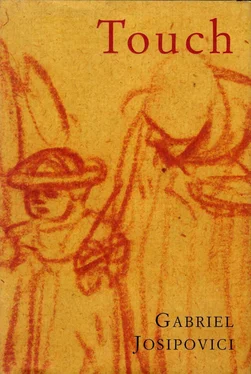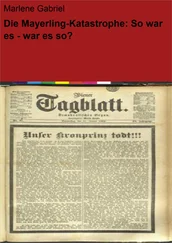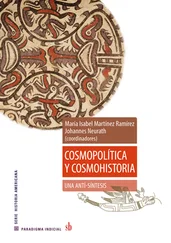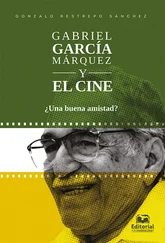Gabriel Josipovici - Touch
Здесь есть возможность читать онлайн «Gabriel Josipovici - Touch» весь текст электронной книги совершенно бесплатно (целиком полную версию без сокращений). В некоторых случаях можно слушать аудио, скачать через торрент в формате fb2 и присутствует краткое содержание. Год выпуска: 1996, ISBN: 1996, Издательство: Yale University Press, Жанр: Современная проза, на английском языке. Описание произведения, (предисловие) а так же отзывы посетителей доступны на портале библиотеки ЛибКат.
- Название:Touch
- Автор:
- Издательство:Yale University Press
- Жанр:
- Год:1996
- ISBN:0300066902
- Рейтинг книги:5 / 5. Голосов: 1
-
Избранное:Добавить в избранное
- Отзывы:
-
Ваша оценка:
- 100
- 1
- 2
- 3
- 4
- 5
Touch: краткое содержание, описание и аннотация
Предлагаем к чтению аннотацию, описание, краткое содержание или предисловие (зависит от того, что написал сам автор книги «Touch»). Если вы не нашли необходимую информацию о книге — напишите в комментариях, мы постараемся отыскать её.
Touch — читать онлайн бесплатно полную книгу (весь текст) целиком
Ниже представлен текст книги, разбитый по страницам. Система сохранения места последней прочитанной страницы, позволяет с удобством читать онлайн бесплатно книгу «Touch», без необходимости каждый раз заново искать на чём Вы остановились. Поставьте закладку, и сможете в любой момент перейти на страницу, на которой закончили чтение.
Интервал:
Закладка:
In the course of his book Harris introduces us to a number of dealers and their collections. Konrad Kujau's ‘included an almost complete set of Third Reich decorations, 150 helmets, 50 uniforms, 30 flags, and, according to Kujau, the largest collection of military jugs in West Germany’. In Goering's yacht, which he had bought, the journalist Gerd Heidemann set out Goering's dinner service, tea-cups, drinking goblets and ashtray. In the cupboard was Goering's uniform; the cushion covers were made from Goering's bathrobe. With the money paid to him for the Hitler diaries by Stern magazine Heidemann bought three hundred paintings, sketches and water-colours by Hitler, as well as Nazi party uniforms, banners, flags and postcards, as well as the actual revolver Hitler used to shoot himself. Most of these, it turned out, were fakes, sold to him by Kujau, the forger of the Hitler diaries. But of course, as with Minoan and Egyptian antiquities earlier in the century, where there is a ready market fakes will abound.
Before he shot himself Hitler tried to ensure that his personal papers would all be destroyed. But already those around him had started collecting. When, on 24 August 1945, American agents raided a house in Schladming, Austria, they found Eva Braun's private photograph album, the notes she had made of her letters to Hitler, and a Hitler uniform. In October they carried out another raid and found twenty-eight reels of colour film, Eva Braun's home movies of her life with Hitler.
As one can see from all this, it is difficult to tell where devotion to Hitler and sheer greed begin and end. As with many late medieval relics, there is a grey area here, and probably a few of the dealers and collectors could themselves say truthfully whether they were in it for the money or for the sense that they were handling what was, after all, a part of history. There is also the sense, exploited in a specific genre of post-war art, film in particular, of the thrill of transgression, of that stagey fetishism which Proust analysed so lucidly and which has rightly been described as camp or kitsch, though unfortunately of a rather more public and dangerous kind than that which the young Marcel so surprisingly came upon that day in Monjouvain.
Konrad Kujau managed to carry on his lucrative trade in forged Nazi memorabilia for many years, until the grandiose scheme of the Hitler diaries caused him to overreach himself and he was finally caught. Harris concludes his book with a question: ‘Why should anyone pay $3500 for a few strands of human hair of dubious authenticity?’ And he answers:
Because, presumably, he might have touched them, as he might have touched the odd scrap of paper, or painting, or piece of uniform — talismans which have been handed down and sold and hoarded, to be brought out and touched occasionally, as if the essence of the man somehow lived on in them. The Hitler diaries, shabby forgeries … were no different. ‘It was a very special thing to hold such a thing in your hand’, said Manfred Fisher, trying to explain the fascination which he and his colleagues felt when the first volume arrived. ‘To think that this diary was written by him — and now I have it in my grasp …’
But this, after all, Harris adds, was ‘a phenomenon which Chaucer's Pardoner, six centuries ago, with his pillow cases and pig's bones, would have recognised at once’.
I think though that we should be wary of making too direct and immediate an identification of Nazi relics with those of the late Middle Ages (just as we should of calling the exhibits in a modern museum ‘secular relics’, as some historians of museums have done). In Chaucer's tale we are still in a world which, for all the abuses it could see in the Church and its ways, still believed that Christianity was somehow coterminous with the universe. The Pardoner is a tragic figure as Kujau is not, partly because what he has to offer is after all a promise of healing and redemption, and partly because his insistence on the fact that his only creed is cupidity is always shadowed by his refrain: radix malorum est cupiditas — the root of all evil is cupidity. In other words, he knows that he himself is damned, as Kujau never does.
The power of the relics Kujau handles depends partly on the horror associated with them and partly on the sense that by handling them one is taking part in a giant play, a play which for a while threatened to overwhelm reality, a play in which the very impulse towards annihilation of others and oneself was for a while given free rein, but which has long since been shown up for the hollow sham it always was. Or — and this is the ultimate source of the frisson which handling such things no doubt conveys — was it?
17 The Jewish Bride
They look at us but they are thinking of each other. Despite the occasion and the finery of their dress, they — she in particular — have that faintly melancholy expression one sees in so many Jewish faces. He sits on the wooden arm of an elegant divan and draws her towards him, his right arm round her waist and his head inclined against her shoulder, so that his cheek seems just to touch the gloved hand she has put up almost protectively. In his left hand he holds his grey top hat and his left foot is thrust forward towards us. She, standing there beside him, does not seem to succumb entirely, partly because he is so precariously perched but also for deeper, more complex reasons, which she would probably not be able to put into words. Her white dress flows down to her feet where it forms a pool of white that covers his right foot, and in her right hand she holds, rather nonchalantly, a bouquet of flowers, their heads pointing towards the floor, which, with the end of the long girdle that runs parallel to it down the left side of her body, introduces an element of fantasy and naturalness into this otherwise rather formal wedding photograph.
They are my grandparents, and the photo dates from the turn of the century. It must resemble thousands if not millions of other wedding photographs of that date. Yet even in its slight stiffness what it registers is above all the trust between these two people as they touch yet remain slightly apart from each other. Though the stance is a little different, it is not all that far removed from Rembrandt's great painting of The Jewish Bride , which similarly conveys a moving combination of tenderness and formality — tenderness in spite of and as a result of the formality. In Rembrandt's painting the man's hand lies protectively just beneath the woman's bosom and her hand rests lightly on his, only four fingers making contact, the merest touch. In the photo, on the other hand, his arm goes protectively round her waist, his hand appearing just above her elegantly curved hip, and she leans towards him, but the message is the same: these two people have entrusted themselves to each other and, for the moment at any rate, they are slightly overawed by the enormity of what they have done; for one long moment touch and distance are combined.
And of course it is a long moment. Because of the changes in the techniques of photography an image such as this, which is in many ways closer to a painting than to a modern snapshot, is simply no longer a possibility. In our much less formal world, too, wedding photographs tend to put one in mind more of a play or a charade than of real life: even when the suits and dresses are not hired for the occasion they tend to be worn awkwardly by people more used to dressing in jeans and pullovers and there is always the sense that this is a comedy put on for other people rather than a moment of significance for themselves. But here there is no play. There is a continuity, we feel, with what has gone before and what is to come, even if the moment itself is of supreme importance. These clothes belong to them; the elegant divan and the heavy drapes of the curtains which form the background do not belong to a photographer's studio but to the drawing room of her father. Their expressions acknowledge and take responsibility for what is laid open to the camera: they are what we see and what they have accepted to reveal. In a secular age which nevertheless still lives to the rhythms of sacramental tradition the photo here could almost be said to have taken over the function of the church or synagogue ceremony: two people here make public their lifelong commitment to each other.
Читать дальшеИнтервал:
Закладка:
Похожие книги на «Touch»
Представляем Вашему вниманию похожие книги на «Touch» списком для выбора. Мы отобрали схожую по названию и смыслу литературу в надежде предоставить читателям больше вариантов отыскать новые, интересные, ещё непрочитанные произведения.
Обсуждение, отзывы о книге «Touch» и просто собственные мнения читателей. Оставьте ваши комментарии, напишите, что Вы думаете о произведении, его смысле или главных героях. Укажите что конкретно понравилось, а что нет, и почему Вы так считаете.












